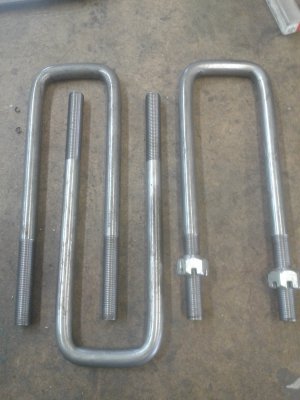- Joined
- Apr 29, 2019
- Messages
- 2,299
Yes the true bend lines can be calculated and every material will have a different bend factor to account for the differences in compressive and tensile strengths. I have never worked at any 2 shops that used the same bend factors even for the same materials. Every shop that I have been at had to do the test coupons to determine what works for them. Once you have the numbers to work with your setup, it is not that hard to hold a few thou on bend tolerance.
If you change your bend fixture or material you need to do new coupons.
The basic formula is (bend factor X material thickness) + (1.57 X inside bend Radius) This gives the amout of flat material consumed in a 90° bend, you then just add up all of the straight lengths to get the blank length.
To get the bend factor you have to do the coupon to measure just how much material was used in the bend and then simple algebra to solve for bend factor.
If you change your bend fixture or material you need to do new coupons.
The basic formula is (bend factor X material thickness) + (1.57 X inside bend Radius) This gives the amout of flat material consumed in a 90° bend, you then just add up all of the straight lengths to get the blank length.
To get the bend factor you have to do the coupon to measure just how much material was used in the bend and then simple algebra to solve for bend factor.
Last edited:













